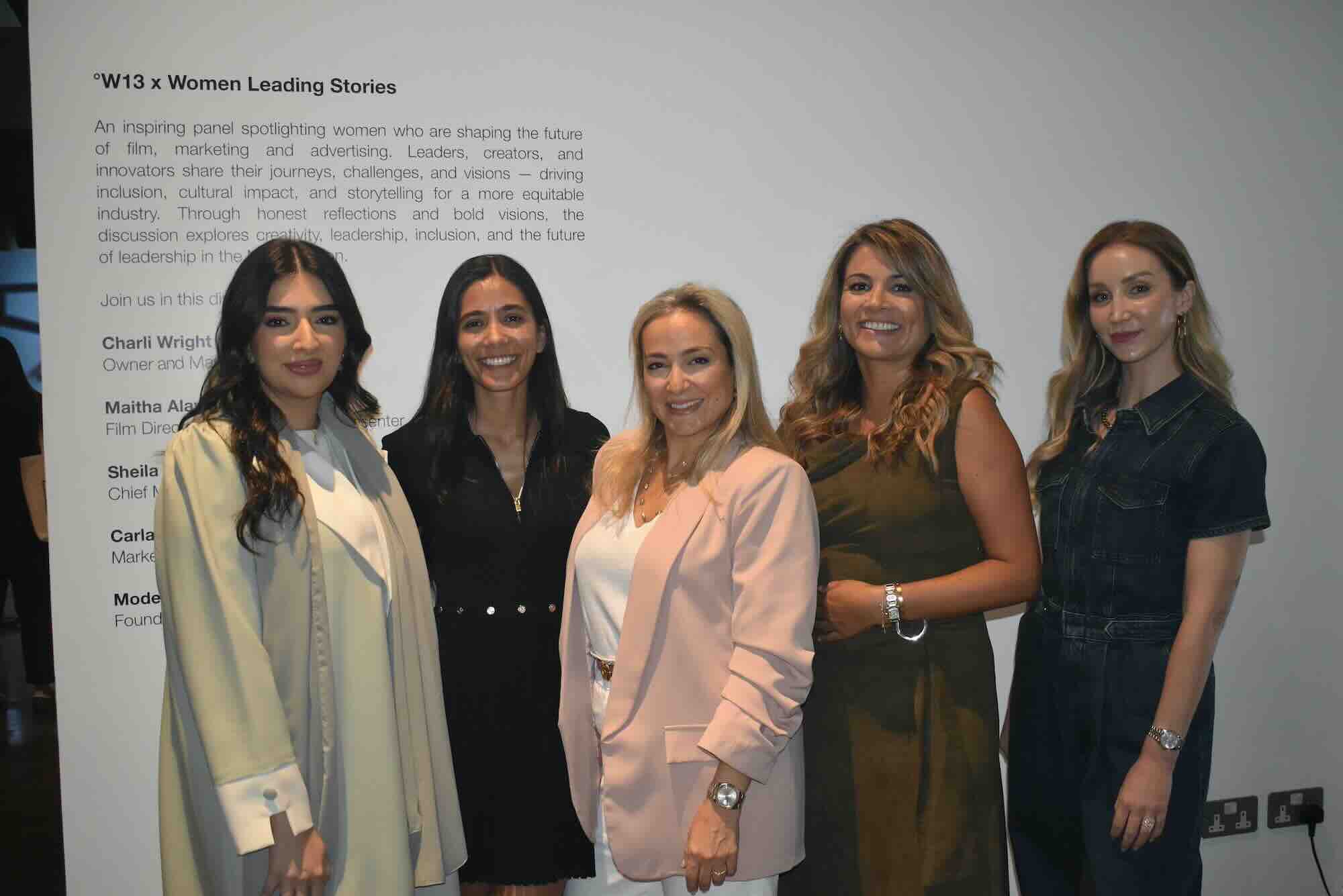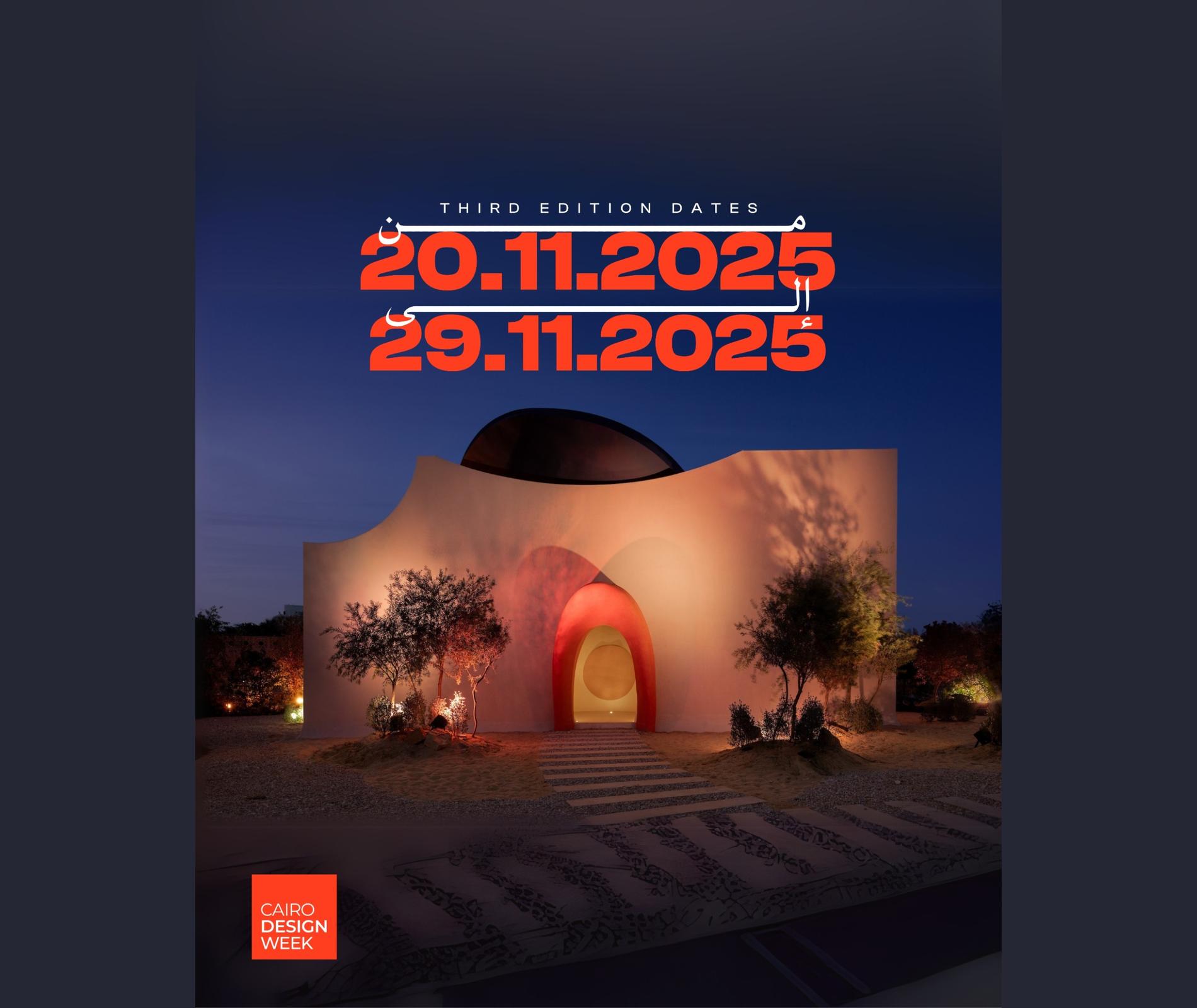News - Events
Epica: Travel to the heart of Adland
by Tarek Chemaly
November 18, 2016
.jpg) Advertisement
AdvertisementThe judging
The jury was supposed to assess online campaigns prior to coming to Amsterdam where the Epica was held this year between 14 to 17 of November. Jurors were had to cast their votes online on a scale of 1 to 10. Just to put the scale of judging into perspective: 1 is damaging, 2 wasteful, 3 boring, 4 predictable, 5 competent, 6 rewarding, 7 innovative, 8 market leading, 9 world class, 10 world beating.
The quote "growing old isn't for sissies" has been attributed often to American comedian Bob Hope, and truth be told, being an Epica juror is not for the faint of heart either. Hundreds - literally - of campaigns among endless categories, have to be assessed.
All of this was preparatory work even before landing in Holland. To insure utmost fairness jurors are withheld from seeing entries from their own countries, so in that perspective lucky are the Dutch, Swede and French jurors who had so much material culled from their judging process. Epica said that "the main objective is to give honest assessment from your expert and passionate point of view" as part of its directives for jurors.
After the original online voting for the digital categories, a pre-selection jury met in Paris to make a shortlist. But "short" is an euphemism since the entries were culled down to more than seven hundred. Mark Tungate, Epica's editorial director, says that "the pre-selection jury of eight people took a full week to arrive to this list" - the one we, as jurors in Amsterdam had to judge. But before all the work, there was still time for a meet and greet organised on our arrival on Sunday the 13th of November as a way to get to know one another as colleagues coming from different publications. From the very first get-together, Leila Abedrabou - events & PR manager - and Lucia Ongay - global press manager - respectively at Epica, were a model of efficiency. No matter what it is, it would get fixed and done. From daily announcements and compilations, to providing taxis for transport to venues to coordinating details big and small, no task was too trivial for them to help the jurors in their stay. And if you wish to know why Ongay signs her emails with ''AKA fanci lady" look no further than global sales director Joe Brooks - global sales director & business development manager - who gave her the nickname.
The College Hotel Amsterdam, where the jury was lodged and where deliberations took place is housed in a stylish 19th-century building, which started life as a school in 1895.
The 30th anniversary jury was headed by Norman Pearlstine chief content officer of Time Inc. who pondered that "for a media brand to thrive, it needs great content, best produced by talented and exacting journalists and supportive advertisers and sponsors. When superb content is complemented by creative advertising, magic can happen.”
The grueling work took two and a half days from Monday to early afternoon on Wednesday. If any comparisons could be offered, it would be watching the night of the "Adeaters" yet having to grade all the ads shown until closing time. Spread over seventy categories, jurors were supposed to choose a Gold Winner in each category - even if in three of them, the award was withheld, as the entries' grades were not high enough to merit the honour. Paradoxically, where two entries were separated by few decimal points, two golds were chosen in the same categories.
Now that the Grand Prix and all results have been revealed, the process that got us there as jurors was indeed a torturous one. With 30 jurors deciding the fate of entries, many campaigns fell victim to different tastes, sensibilities, age trends, cultural backgrounds and many other characteristics that make jurors differ in opinion. A specific campaign truly tore the jury in - almost - half, with several thinking it was innovative, breakthrough and daring while the rest looked at it blandly with little - or indeed no - interest whatsoever. Funnily, one of the Grand Prix had to be revoted because the results were tight between two entries, the second brought a winner totally from left-field, which was neither of the disputed entries. But such is the nature of the democratic process that eventually "favourites" we came armed with across categories, eventually died naturally, allowing for compromise to be reached.
As a matter of fact, revoting happened several times, specifically across Grand Prix categories. But if anything, jury deliberations were a microcosm of peaceful negotiations as they should happen. A specific incident is that of an ad - "Doors of Thrones" - in a rather "obscure" category (Illustration), which did not even help it win gold the first time around. A juror brought it to the attention of the jury and eventually it received a different grading allowing it to scoop the second gold, and lo and behold, it climbed up the charts right up the Grand Prix. On another instance, a campaign for Honda that was filed under a certain category, was moved to a more appropriate one (from sound to animation), and there too - under the specific light, it also won the Gold.
The incidents above were not unique, rather they were a sample of how flexible the jury was, truly trying to be fair and impartial to the entries. What distinguishes Epica is naturally that it is judged by journalists, not by creatives. So the traditional "clash of interest" between creatives as members of juries is not present. There is no bartering as to "give me this award and I would vote for you on that one", which naturally, offers a fresh perspective. Campaigns that made the rounds of other advertising awards had a lukewarm reception, and unknown gems suddenly shown to light - with a special mention to the entry from Nigeria from the Ignis brand by the Far East Mercantile Limited.
An 'Adlicious' gathering
Wednesday night, after two and a half very stressful days, saw a unique event - a dinner, which of course we were all longing for after the stress of the days that passed. Yet, our hosts and their sponsor Euronews decided to give it a twist. With the help of professional chefs, we were to cook our own dinner. On paper, it was a terrible idea. Yet, between peeling potatoes and celeries, cutting chicken and salmon, preparing chocolate crumbs and gelato, between cooking this and watching out for the temperature of that, it turned to be - not just a therapeutic process - but an excellent way to get to know fellow jurors. Suddenly "'the carrots you prepared were excellent" and 'those chocolate crumbs are exceptional' took on different and much more heartfelt meanings, as an appreciation to other people's efforts.
When advertising becomes ARTvertising
For the 30th anniversary of Epica, a conference was held on Thursday, from the title ''when advertising becomes ARTvertising'' to the high-caliber speakers, the result was a first-rate extravaganza of ideas and concepts. Held at the Panama Club, a venue with exceptional sound quality, it featured a whole array of interventions around the topic in question.
Opening the show was Danish author Thomas Kolster, from the "GOODvertising" book fame, who went through examples upon examples of brands, which truly tried to do good in their communities and the way they set about doing it. In a private chat with ArabAd, Kolster - when asked about the limit of CSR (Corporate Social Responsibility) and the beginning of goodvertising - said that "CSR is what companies need to do, whereas doing good is what they want to do to solve a problem". But when confronted with an opportunistic side to brands, Kolster gave the example of American Express, which is the founding partner of Small Business Saturday - a manifestation that supports small businesses in the United States - which "did not come up with this event out of nowhere, actually ever since the seventies American Express was involved in its community so much and it was donating a cent from every transaction that used American Express cards for the rehabilitation of the Statue of Liberty in the United States". Another example Kolster volunteered was the Nike Flyknit, which actually required much less sewing, assembly and eventually raw materials - which produced much less waste - when compared to regular sneaker production.
Kolster started out in "traditional advertising'', his ''major turning point was the COP15 - the environment conference which took place in Copenhagen at the time" - he adds that "naively, I truly believed we could get a solution to world issues from that conference, but if anything, it was the jumpstart for me to think about the issues surrounding me. An ad I remember from the time was for a car brand, which said "we bring our cars by train" and it was that brand's contribution to solving the issue".
Asked about whether the altruistic vision came from the fact that Denmark was a society in which the government would provide too much to the population - including cell phones for example - Kolster says that "it literally differs from one society to the other. In certain countries, multinationals are rebuked if they interfere in people's lives, whereas in other countries the government is so overwhelmed it is the duty of companies to interfere to cover the lag. Unilever is a prime example of companies really trying to do good around them, they have a vision of where they want to be in people's lives."
But do his projects have tangible effects on the ground? ''I have done projects in Mozambique, one hairdresser had one bucket of water for all their clients of that day. In some nations saving and recycling are part of the DNA of the population, and it is up to us to take them on that journey further," concludes Kolster.
Next on stage was Cecilia Martin, co-founder Lava Lab, on museum branding and outreach towards millenials. A very inspiring talk of how to reach out to new generations and what makes them tick alongside of how to attract them to a culture which is supposed to be not their own. Examples included the rikjsstudio app, launched by the venerable Rikjs Museum, which allowed a younger category of potential museum goers to play with the artworks, store them according to details, mix them and rework them accordingly. Another wonderful case study was the Moscow Design Museum, which started out as a dream, a major pre-opening campaign, only to reach a prime buzz and huge attendance upon opening. Martin took the attendees through the logo production and identity creation revealing even why "classical branding" proved a failure when it would have worked with other brands in different markets.
Next on was Stephanie Feeney, the strategy director of 72andSunny Amsterdam, who revealed to us that their name is a conversation breaker specifically coming from a place where rain is a constant weather presence, and how they, as an agency got to three fundamental facts: 1 - Ideas are cheap 2 - Values are not 3 - Know your stretch. Know your limit. And in an effort to brief themselves as to who they are and what they stand for, they ended up creating a defining product, which is very fitting to their culture, the RAYNSIE - which is an Amsterdam-based performance raingear brand. "Our products embody Amsterdam's bold indifference to all forms of undesirable weather. The way we see it, there's no such thing as crappy weather, just crappy clothes. It's an attitude that hits you as soon as you get here; to truly become an Amsterdammer, you have to embrace the rain. The way we deal with it is a metaphor for the way we live our lives" - the product is so Amsterdam specific, its line is "pray for rain". It is a onesie in several striking colours, which is rain and wind proof and that bicycle riders can wear to protect themselves from inclement weather.
Barry Wacksman, EVP Global Chief Strategy Officer, R/GA, took the stage and being a key architect of R/GA’s vision of the connected age, which is a vision that seamlessly combines digital platforms that consumers use on an ongoing basis with the episodic storytelling of campaigns to help brands achieve differentiation in an otherwise commoditised marketplace for consumer goods. Stories of Beats by Dr. Dre branding of their headphones for the Olympics in 2012, or the Beat Pills, and eventually Lebron James wearing Powerbeats Wireless, or even the "Straight out of Compton" app, which became a major phenomenon, were all included in his presentation.
Straight from The Gunn Report, Amanda Benfell, its director of communications, came with a very insightful presentation of the way of the world of advertising today. It turns out that what makes ads famous is the creativity involved, and the fame --which nowadays spreads on social media. The more emotional the ad is - as opposed to rational or a combination of the two - the move memorable it becomes. Fame only adds to the lasting memory by people contributing to its status as an ad which has longevity. However, focusing on the short-termism of the campaigns (due to a drift from TV as a central medium) and the sharp decrease for creative ads is hurting brands in the long run.
If any presentation was hotly awaited, it was that of Bas Korsten, Executive Creative Director, J. Walter Thompson Amsterdam who spearheaded the ING Bank "the next Rembrandt" campaign, which was awarded the Grand Prix of the digital category this year. And for a prime, we got to see the computer generated picture, which looks like a "real" Rembrandt like two drops of water. Korsten, in a private discussion tells me that "there was a team of twenty people for eighteen months working on this, it was an investment of time and energy from ING, which truly proved how engaged they are in the world of arts and culture".
And as the expression goes, last but not least, came the enfant terrible of the advertising world, the CCO and head of BETC Stephane Xiberras guiding us through incredible advertising specimens, as to what makes memorable ads - something he is indeed known for (to mention "the bear" for Canal+, which was the most awarded TV ad ever in the Gunn Report).
A round table about office design followed, only to precede the award ceremony, which - for its 30th anniversary - was a sweet reminder of times gone by starting from the first film ever to win the Epica Grand Prix in 1987, which went to The Guardian newspaper at the time. Epica self-depreciatingly gave a nod to other products, which had the same name - a buick? European Project for Ice Coring in Antarctica? And the list goes one. Sadly some agencies could not attend - the absence of Try from Norway to get their "Brad is single" Grand Prix Press was noted, but still, nothing would sour the mood of the night where talent and creativity abounded.
To say the level was high this year is some sort of a cliche statement, however, many of the ads, which did not even get a gold could have been Grand Prix winners had they entered in different years, except with tight competition and exceptionally high standards, as jurors we tried to do our best to give top notch awards to what we assumed to be the best.
After 30 years, Epica has the ability to grow younger in mind and behaviour, here's to 30 more years ahead!


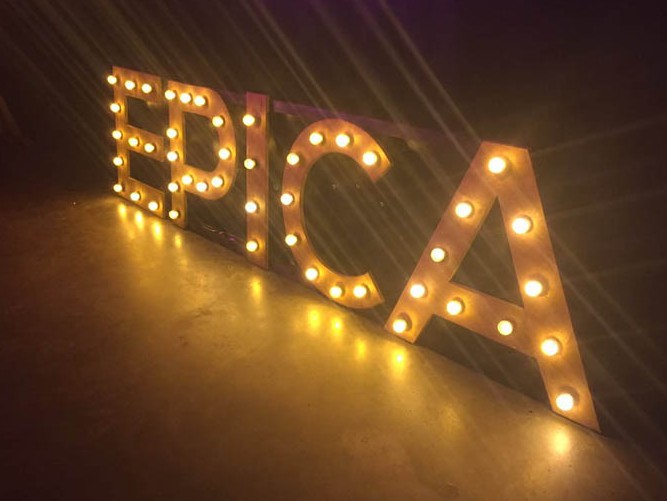
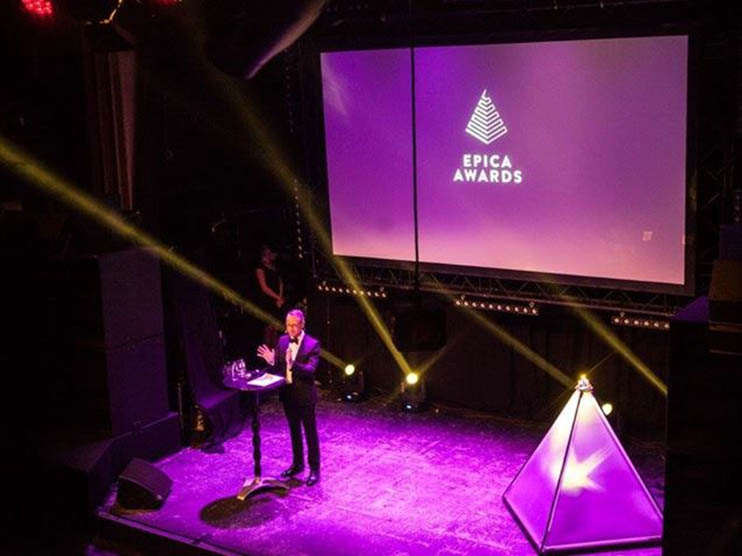
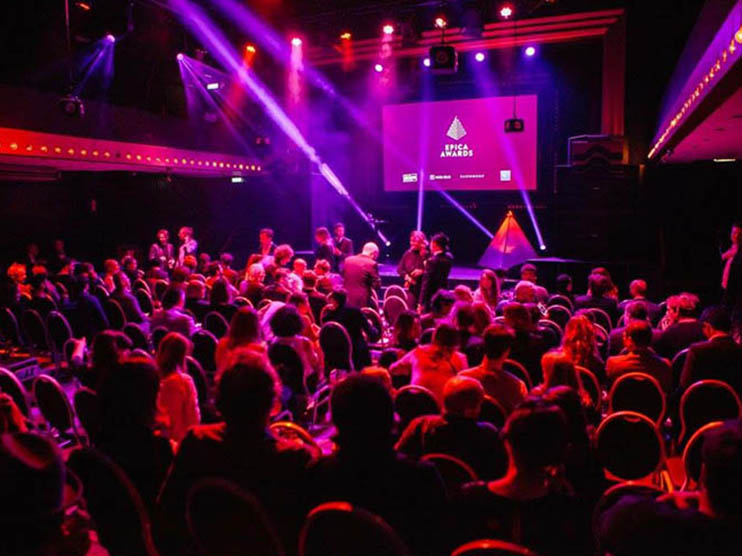


.jpg)



